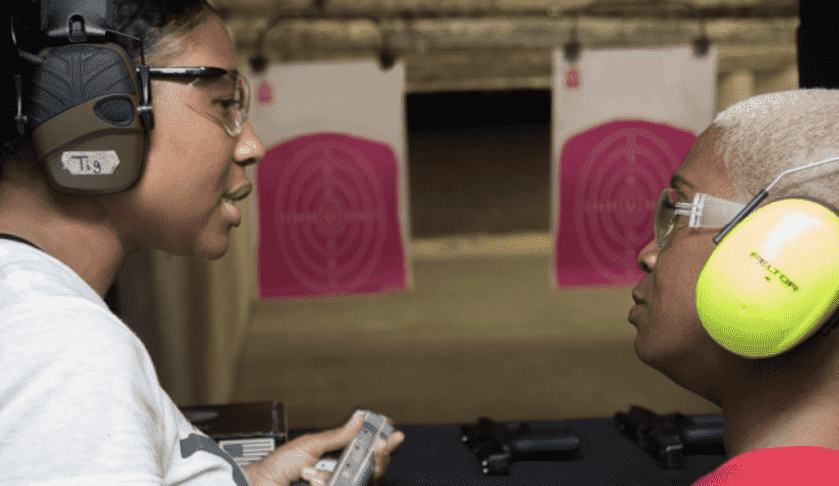
By Elizabeth McGuigan
A recent article published on The Conversation draws a correlation between the psychological impact of so-called “gun violence” on Americans and reduced trust. Victims of violent crime can, understandably so, be psychologically affected by the choices of a criminal’s intent on inflicting harm. However, the article uses outdated data to try and connect victims of violence with reduced levels of trust. The author cites obsolete information from the U.S. General Social Survey which covers data collected from 1973 to 1994.
Unsurprisingly, there is also a false assertion that violent crime has been rising in recent years. Violent crime peaked in the United States in the early 1990s which would have strongly influenced the responses collected by the U.S. General Social Survey the article relies upon. Violent crime rates, however, have dropped steadily since the early 1990s. This is apparent not only in the historic data reported by the FBI but also in recent data released by the U.S. Department of Justice which reports a 15% drop in violent crime from 2018 to 2019. Furthermore, according to the Preliminary Uniform Crime Report, January-June 2020, violent crime rates are lower in the first six months of 2020 when compared to the same timeframe of 2019. An important takeaway from this report is the drop in overall violent crime but the rise of manslaughter and aggravated assault offenses, 14.8 percent and 4.6 percent respectively, that can be attributed to the current civil unrest. It should be noted that this specific, recent increase is not part of a years-long trend, but is likely influencing the perception of safety and trust with the general public and contributing to a rational rise in first time gun owners from all walks of life.

Source: https://ucr.fbi.gov/crime-in-the-u.s
Firearm ownership has increased with multiple record-breaking months year after year. The article acknowledges that victims of crime have reduced trust; yet, puts a spotlight on the firearm instead of the criminal. This is a deliberate smoke and mirrors effort to cast firearm ownership in a negative light while minimizing the culpability of offenders who committed the crime. It is not the firearm that broke the law and victimized an innocent person. It is always the criminal who is responsible for his or her actions.
The Second Amendment itself may help build the trust of law-abiding individuals by enumerating the right to keep and bear arms to defend oneself, loved ones and property. Whether or not a victim of crime feels a lack of trust in society, certainly the knowledge that he or she can protect themselves in a time of need is paramount. Kimberly Corban, a rape survivor, famously confronted President Barack Obama on his gun control stance, telling him in a nationally-televised forum that since being victimized, she is an unapologetic gun owner. “I have been unspeakably victimized once already, and I refuse to let that happen again to myself or my kids.”
Holding Criminals Accountable
What is being done to catch violent criminals? The first step is to enforce the law to prevent prohibited persons, like convicted violent criminals, from obtaining a firearm in the first place. The firearm and ammunition industry supports these laws and works hard to help ATF educate retailers about how to spot and stop straw purchasers and to encourage all government entities to submit their prohibiting records to the FBI’s National Instant Criminal Background Check System (NICS). The Trump Administration is putting prosecution at the forefront with initiatives such as Operation Legend, which is expanding collaboration among federal, state and local law enforcement departments throughout the country to address violent crime. In a recent press release, Attorney General William Barr announced several impressive updates since the initiative rollout, including 2,000 arrests. Furthermore, the Bureau of Alcohol, Tobacco, Firearms and Explosives (ATF), FBI, Drug Enforcement Agency (DEA) and U.S. Marshals Service have confiscated over a thousand firearms, 111.2 kilos of illegal drugs, and $5.19 million in drug proceeds since the start of the program.
Building Trust
Law enforcement agencies and the criminal justice system must work tirelessly to apprehend violent offenders and prevent recidivism by career criminals. Addressing illegal activity at the source, the criminal – is a valuable building block to create a more confident and resilient nation, as seen by the steady reduction of violent crime over the years. Americans who lose trust in their communities or fellow citizens should not be further negatively impacted by antigun advocates. Articles like the one in the Conversation drive a wedge in communities to ostracize law-abiding citizens who choose to exercise their Second Amendment rights. Instead, we need to promote legal and responsible gun ownership through collective support, education, and utilization of resources like #LetsGoShooting® and +ONESM.
Elizabeth McGuigan is the Director of Legislative and Policy Research for the National Shooting Sports Foundation, the trade association for the firearms and ammunition industry. Previously, she conducted policy and economic research for the financial industry and advocacy groups in Washington, DC.
